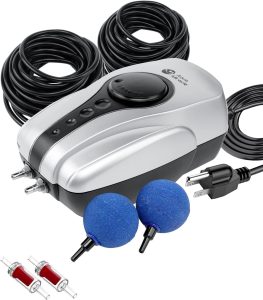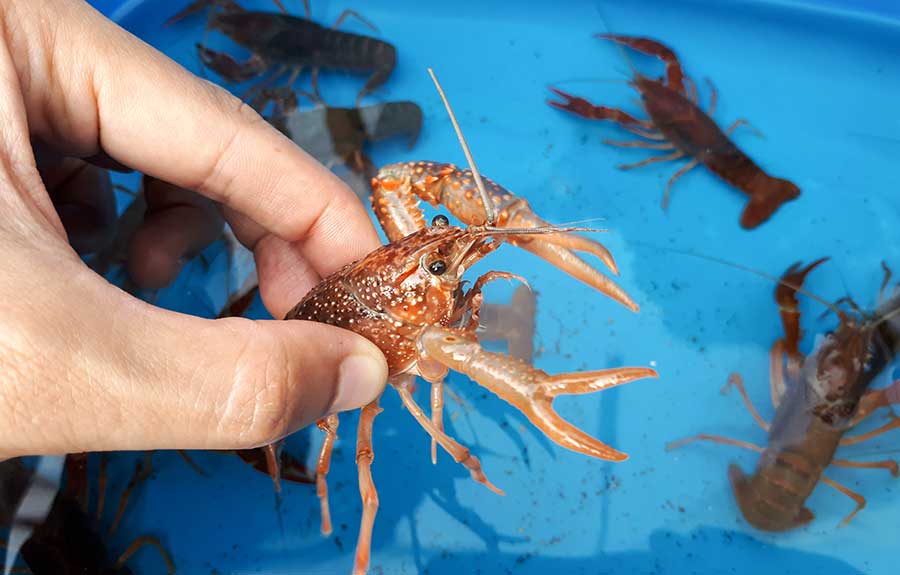Welcome to our detailed guide on how to start your very own crawfish pond! Whether you’re a seasoned farmer looking to diversify your operations or a beginner interested in exploring the world of aquaculture, creating a crawfish pond can be a rewarding and profitable venture. In this article, we will walk you through the essential steps and considerations involved in starting a successful crawfish pond.
Crawfish Pond Aerator For Beginners

Understanding Crawfish Farming
Crawfish, also known as crayfish or crawdads, are freshwater crustaceans that are widely consumed and prized for their delicious meat. Crawfish farming involves the cultivation of these crustaceans in a controlled environment such as a pond or a rice field. The process typically involves stocking juvenile crawfish, providing them with the necessary conditions to grow and thrive, and harvesting them once they reach maturity.

Credit: smallbiztrends.com

Credit: smallbiztrends.com
Choosing the Right Location
The first step in starting a crawfish pond is selecting the right location. Ideally, you want to choose a site that has access to a reliable water source, good soil quality, and adequate sunlight. The pond should also be situated away from potential sources of contamination such as industrial facilities or agricultural runoff.
Site Selection Criteria:
- Access to water source
- Good soil quality
- Adequate sunlight
- Away from contamination sources
Crawfish Pond Aerator For Beginners

Designing Your Crawfish Pond
Once you have identified a suitable location, the next step is to design your crawfish pond. The size and shape of the pond will depend on factors such as the available space, the intended stocking density, and the desired harvesting method. In general, a rectangular or square-shaped pond with gently sloping sides works well for crawfish farming.
Key Considerations For Pond Design:
- Pond size and shape
- Water depth and quality
- Aeration and circulation
- Shelter and hiding spots
Preparing the Pond
Before stocking your pond with juvenile crawfish, it is essential to properly prepare the pond to create a suitable habitat for them to grow. This involves tasks such as removing any debris or vegetation, leveling the pond bottom, and ensuring proper water quality. It is also crucial to establish vegetation and shelters to provide cover for the crawfish.
Steps For Pond Preparation:
- Clearing debris and vegetation
- Leveling pond bottom
- Checking water quality
- Establishing vegetation and shelters
Stocking Juvenile Crawfish
Once the pond is ready, it’s time to stock it with juvenile crawfish. You can purchase juvenile crawfish from hatcheries or collect them from the wild. It is essential to stock the pond at the right density to ensure optimal growth and prevent overcrowding. The juveniles will feed on natural vegetation and supplemental feed provided by the farmer.
Tips For Stocking Juvenile Crawfish:
- Source from reputable hatcheries
- Stock at recommended density
- Monitor growth and behavior
- Provide adequate feed
Managing Your Crawfish Pond
Proper management is crucial for the success of your crawfish pond. This includes monitoring water quality, controlling predators and pests, and ensuring proper aeration and circulation. Regular inspections and maintenance are essential to prevent diseases and maintain optimal conditions for the crawfish to thrive.
Key Aspects Of Pond Management:
- Water quality monitoring
- Predator and pest control
- Aeration and circulation maintenance
- Disease prevention and treatment
Harvesting and Marketing
After several months of growth, your crawfish will be ready for harvesting. The harvesting method will depend on your preferences and the size of your operation. Common methods include draining the pond and hand-picking the crawfish or using traps and nets. Once harvested, the crawfish can be sold to local markets, restaurants, or directly to consumers.
Harvesting Tips:
- Choose the right harvesting method
- Handle crawfish with care
- Market your product effectively
- Explore value-added products
Conclusion
Starting a crawfish pond can be a fulfilling and profitable endeavor for farmers and aquaculture enthusiasts alike. By following the steps outlined in this guide and paying attention to key considerations such as site selection, pond design, and proper management, you can set yourself up for success in the exciting world of crawfish farming. With dedication and hard work, you can enjoy the rewards of producing high-quality crawfish for the market while contributing to the sustainability of aquaculture practices.




